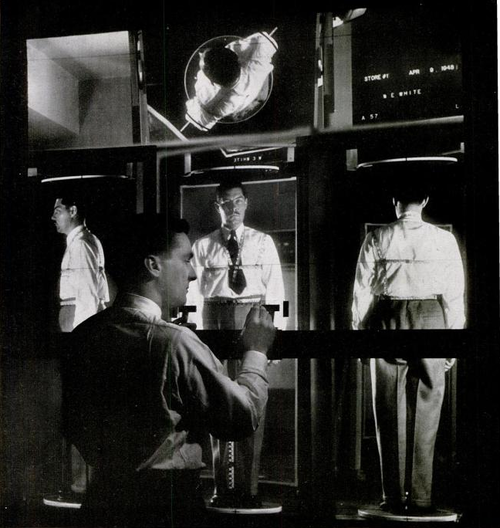
One of the things that interest me about men’s clothing is not just the clothes themselves, but also the business of fashion – how things are produced, marketed, and even sold. In 2013, there were a couple of interesting stories about how developments in technology might affect the way we interact with and buy clothes.
- Online Fitting: Our friend Jeffery Diduch had a post last year about developments that could improve our online shopping experience. The biggest difficulty with online shopping, obviously, is the inability to try things on before you buy, which is why it’s helpful to do business with stores with generous return policies. Companies are coming up with innovative ways to reduce that return-rate, however. True Fit, for example, is creating a database of garment measurements across companies, so that if you’re shopping at, say, Ralph Lauren, you can get a suggestion on which suit you should buy if you already know that the Brooks Brothers suit you have in your closet fits you well. You can already see how this works at places such as Nordstrom.
- The Store is Everywhere: There were a couple of stories last year about potential smart phone developments that would allow people to take pictures of others on the street, and then be able to identify exactly where they can buy the clothes and accessories they saw. This would essentially make the entire world a store where you can instantly purchase almost anything you see. Business of Fashion – a fashion industry trade publication – had some interesting thoughts on what this could mean for traditional retail.
- Science Fiction: There were also some more futuristic predictions. Ray Kurzweil predicted that we’ll start to see 3D printing for clothes by 2020 (surprisingly not that far away) and Business of Fashion wrote about how the emerging field of “digital biology” – which enables biologists to not just read, but also write genetic code – could allow companies to design “synthetic life” materials. This could allow us to “grow” things such as self-repairing, self-cleaning garments, or create garments that can reproduce themselves and receive “updates” (new colors, patterns, etc), much like how software updates on our computers.
Of course, many of the advancements in technology will affect fashion in ways we won’t immediately see or realize. Increasing computing power and the digitization of data has allowed companies such as Zara to react faster to consumer trends, and as companies grow in their ability to marshal “big data,” we’ll likely see fast fashion get even faster (a speeding up of trends and a continuing drop in prices). For better or worse, the idea that men’s style moves at a glacial pace might not always hold true.
(Pictured above: an early prototype of “body scanning” pods used for custom tailoring. This contraption was made in the 1940s)







